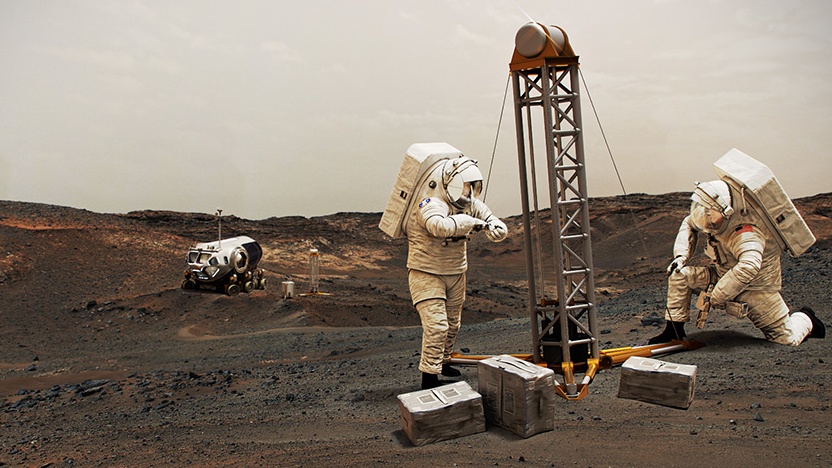Mars astronauts could make rocket fuel on the Red Planet someday. Here's how

Future visitors to Mars will not only need oxygen to breathe, but also to serve as rocket propellant. And because oxygen takes up valuable weight aboard spacecraft, space mission planners are interested in the idea of creating oxygen right there on Mars with raw Martian materials.
Two such scientists have proposed a method that they believe could produce enough oxygen to propel a six-person craft into Martian orbit.
In 2022, the Perseverance rover's MOXIE instrument used electrolysis to transform carbon dioxide present in Martian air into a trickle of oxygen. It was the first time humans had chemically transformed another world's resources. MOXIE was therefore an important start, to be sure, but any crewed Mars mission will need far more than the few grams of oxygen per hour this device was capable of creating.
Related: Sending astronauts to Mars by 2040 is 'an audacious goal' but NASA is trying anyway
The team's newly proposed method also relies on electrolysis like MOXIE, but has the potential to produce several hundred times more oxygen content. If it works, it would generate an estimated 3 kilograms (6.6 lbs) of oxygen per hour, the scientists say. Here's how the mechanism is expected to function.
Carbon dioxide, which are molecules made of one carbon atom and two oxygen atoms, from the Martian atmosphere would first get compressed and heated. That warmed gas would then enter what're known as electrolysis cells, and inside those cells, electricity would run through the heated carbon dioxide molecules, thereby splitting out their oxygen atoms.
That oxygen content would then flow out and cool down, turning into a liquid. The oxygen's heat would then feed back into heating new gas entering the electrolysis cells.
Breaking space news, the latest updates on rocket launches, skywatching events and more!
The authors think that, if a hypothetical Mars crew operated this machine for the length of a predicted typical mission of 14 months, or 420 sols, those astronauts would create about 30 metric tons of oxygen, enough to let them break free of the Martian surface gravity.
The authors published their idea on June 9 in the journal Space: Science & Technology.

Rahul Rao is a graduate of New York University's SHERP and a freelance science writer, regularly covering physics, space, and infrastructure. His work has appeared in Gizmodo, Popular Science, Inverse, IEEE Spectrum, and Continuum. He enjoys riding trains for fun, and he has seen every surviving episode of Doctor Who. He holds a masters degree in science writing from New York University's Science, Health and Environmental Reporting Program (SHERP) and earned a bachelors degree from Vanderbilt University, where he studied English and physics.
